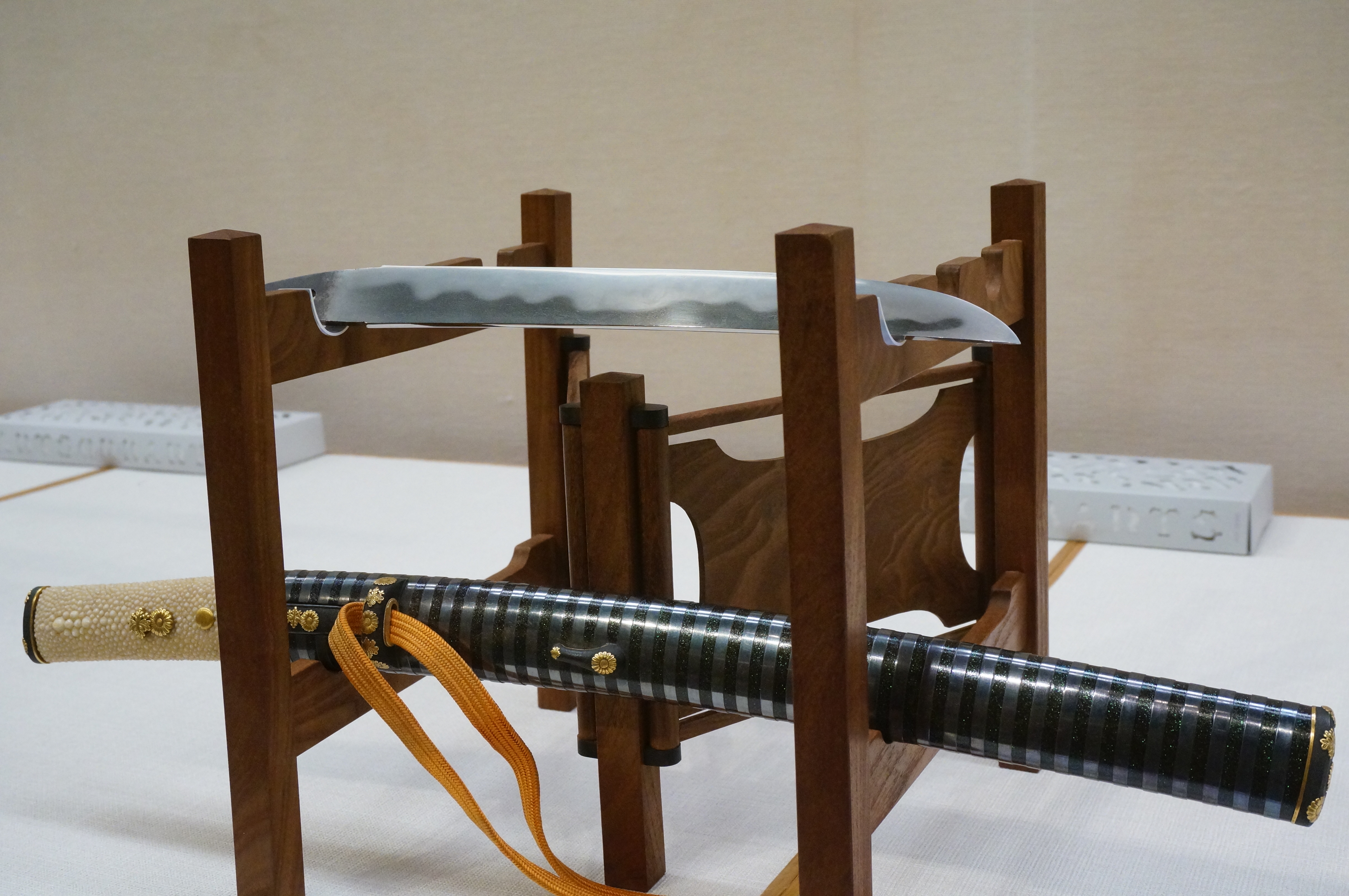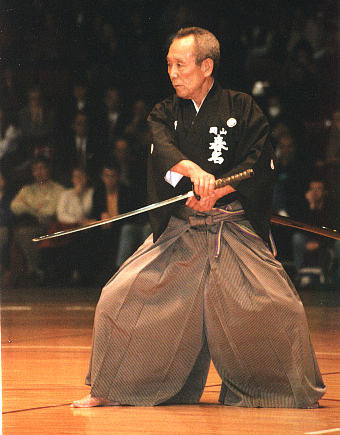|
Yubitsume
or ''otoshimae'' is a Japanese ritual to atone for offenses to another, a way to be punished or to show sincere apology and remorse to another, by means of amputating portions of one's own little finger. In modern times, it is primarily performed by the yakuza, a collection of Japanese criminal organizations. Origin The ritual is thought to have originated with the bakuto, itinerant gamblers who were predecessors of the modern yakuza.Kaplan, D.; Dubro, A: ''Yakuza'', p. 14. University of California Press, 2003 If a person was unable to pay off a gambling debt, yubitsume was sometimes considered an alternative form of repayment. Yubitsume was a form of credit and reputation score. Yubitsume is also a sign of surrender by the defeated in a yakuza war. The reason for this is that in Japanese swordsmanship (kendo and iaido), the sword cannot be held tightly, and the little finger's grip is the tightest on the hilt. A little-finger amputee was therefore unable to grip his sword ... [...More Info...] [...Related Items...] OR: [Wikipedia] [Google] [Baidu] |
Yakuza
, also known as , are members of transnational organized crime syndicates originating in Japan. The Japanese police and media (by request of the police) call them , while the yakuza call themselves . The English equivalent for the term ''yakuza'' is gangster, meaning an individual involved in a Mafia-like criminal organization. The yakuza are known for their strict codes of conduct, their organized fiefdom nature, and several unconventional ritual practices such as '' yubitsume'', or amputation of the left little finger. Members are often portrayed as males with heavily tattooed bodies and wearing '' fundoshi'', sometimes with a kimono or, in more recent years, a Western-style "sharp" suit covering them. At their height, the yakuza maintained a large presence in the Japanese media, and they also operated internationally. In 1963, the number of yakuza members and quasi-members reached a peak of 184,100. [...More Info...] [...Related Items...] OR: [Wikipedia] [Google] [Baidu] |
Tantō
A is a traditionally made Japanese knife () that was worn by the samurai class of feudal Japan. The dates to the Heian period, when it was mainly used as a weapon but evolved in design over the years to become more ornate. were used in traditional martial arts () and in the ''seppuku'' suicide ritual. The term has seen a resurgence in the West since the 1980s as referring to a point style of modern tactical knives, designed for piercing or stabbing, though the style is not present on any traditional tantō. A Tanto knife may refer to an American style of blade based of the Japanese , usually with a squared rather than curved tip. Description The is a single or double edged dagger with a length between (1 Japanese ). The was designed primarily as a stabbing weapon, but the edge can be used for cutting, slashing as well. are generally Forging, forged in the style (without a ridgeline), meaning that their sides have no ridge line and are nearly flat, unlike the structur ... [...More Info...] [...Related Items...] OR: [Wikipedia] [Google] [Baidu] |
Little Finger
The little finger or pinkie, also known as the baby finger, fifth digit, or pinky finger, is the most ulnar and smallest digit of the human hand, and next to the ring finger. Etymology The word "pinkie" is derived from the Dutch word ''pink'', meaning "little finger". The earliest recorded use of the term "pinkie" is from Scotland in 1808. The term (sometimes spelled "pinky") is common in Scottish English and American English, and is also used extensively in other Commonwealth countries such as New Zealand, Canada, and Australia. Nerves and muscles There are nine muscles that control the fifth digit: Three in the hypothenar eminence, two extrinsic flexors, two extrinsic extensors, and two more intrinsic muscles: * Hypothenar eminence: ** Opponens digiti minimi muscle ** Abductor minimi digiti muscle (adduction from third palmar interossei) ** Flexor digiti minimi brevis (the "longus" is absent in most humans) * Two extrinsic flexors: ** Flexor digitorum superficialis ** ... [...More Info...] [...Related Items...] OR: [Wikipedia] [Google] [Baidu] |
Bakuto
''Bakuto'' (博徒) were itinerant gamblers active in Japan from the 18th century to the mid-20th century. They were one of two forerunners (the other being ''tekiya'', or peddlers) to modern Japanese organized crime syndicates called ''yakuza''. History Beginning around the 17th century, ''bakuto'' plied their trade in towns and highways in Edo period, feudal Japan, playing traditional games such as hanafuda and Chō-han, dice. During the Tokugawa shogunate, violent ''bakuto'' ''ikka'' (families) rose to power with the gambling spaces they ran, occasionally hired by local governments to gamble with laborers, winning back worker's earnings in exchange for a percentage. They had varying qualities of relationships with the villages in which they lived, often as well with the government, despite their connection. In the 18th century, the tradition of Irezumi, elaborate tattooing was introduced into ''bakuto'' culture. Dealers of card or dice games often displayed these full-body t ... [...More Info...] [...Related Items...] OR: [Wikipedia] [Google] [Baidu] |
:Category:Japanese Words And Phrases ...
{{Commons Words and phrases by language Words Words Words A word is a basic element of language that carries meaning, can be used on its own, and is uninterruptible. Despite the fact that language speakers often have an intuitive grasp of what a word is, there is no consensus among linguists on its ... [...More Info...] [...Related Items...] OR: [Wikipedia] [Google] [Baidu] |
Amputation
Amputation is the removal of a Limb (anatomy), limb or other body part by Physical trauma, trauma, medical illness, or surgery. As a surgical measure, it is used to control pain or a disease process in the affected limb, such as cancer, malignancy or gangrene. In some cases, it is carried out on individuals as a Preventive healthcare, preventive surgery for such problems. A special case is that of congenital amputation, a congenital disorder, where fetus, fetal limbs have been cut off by constrictive bands. In some countries, judicial amputation is currently used punishment, to punish people who commit crimes. Amputation has also been used as a tactic in war and acts of terrorism; it may also occur as a war injury. In some cultures and religions, minor amputations or mutilations are considered a ritual accomplishment. When done by a person, the person executing the amputation is an amputator. The oldest evidence of this practice comes from a skeleton found buried in Liang Tebo c ... [...More Info...] [...Related Items...] OR: [Wikipedia] [Google] [Baidu] |
Criminal Organizations
Organized crime is a category of transnational, national, or local group of centralized enterprises run to engage in illegal activity, most commonly for profit. While organized crime is generally thought of as a form of illegal business, some criminal organizations, such as terrorist groups, rebel groups, and separatists, are politically motivated. Many criminal organizations rely on fear or terror to achieve their goals or aims as well as to maintain control within the organization and may adopt tactics commonly used by authoritarian regimes to maintain power. Some forms of organized crime simply exist to cater towards demand of illegal goods in a state or to facilitate trade of goods and services that may have been banned by a state (such as illegal drugs or firearms). Sometimes, criminal organizations force people to do business with them, such as when a gang extorts protection money from shopkeepers. Street gangs may often be deemed organized crime groups or, under stri ... [...More Info...] [...Related Items...] OR: [Wikipedia] [Google] [Baidu] |
Kendo
is a modern Japanese martial art, descended from kenjutsu (one of the old Japanese martial arts, swordsmanship), that uses bamboo swords ( shinai) as well as protective armor ( bōgu). It began as samurai warriors' customary swordsmanship exercises, and today, it is widely practiced within Japan and has spread to many other nations across the world. History Swordsmen in Japan established schools of ''kenjutsu'' (the ancestor of kendo). These continued for centuries and form the basis of kendo practice today.. Formal kendo exercises known as ''kata'' were developed several centuries ago as ''kenjutsu'' practice for warriors. They are still studied today, in a modified form. The introduction of bamboo practice swords and armor to sword training is attributed to during the Shotoku Era (1711–1715). Naganuma developed the use of this armor and established a training method using bamboo swords. , third son of Naganuma and the eighth headmaster of the Kashima Shinden Jik ... [...More Info...] [...Related Items...] OR: [Wikipedia] [Google] [Baidu] |
Iaido
, abbreviated , is a Japanese martial art that emphasizes being aware and capable of quickly drawing the sword and responding to sudden attacks.Christensen, Karen and Allen Guttmann et.al (2001) ''International Encyclopedia of Women and Sports: H-R''. Macmillan Reference USA, Page 553. Iaido consists of four main components: the smooth, controlled movements of drawing the sword from its scabbard (or saya), striking or cutting an opponent, shaking blood from the blade, and replacing the sword in the scabbard.John Nauright, Charles Parrish, edited (2012) ''Sports Around the World: History, Culture, and Practice''. ABC-CLIO. Page 226. While beginning practitioners of iaido may start learning with a wooden sword ( bokutō 木刀) depending on the teaching style of a particular instructor, most of the practitioners use a blunt-edged sword called an iaitō or ''mogitō''.Armstrong, Hunter B. (1995) ''The koryu Bujutsu Experience'' in Koryu Bujutsu: Classical Warrior Traditions o ... [...More Info...] [...Related Items...] OR: [Wikipedia] [Google] [Baidu] |





